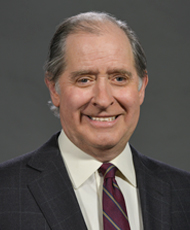Investing in people’s lives
October 2020
 This week Governor Tim Walz put his final signature on a $1.9 billion plan to invest in capital projects across the state. Included in that bonding bill are several key priorities for the Met Council, including $5 million in funding to help metro area cities repair aging wastewater systems and another $5 million in funding for regional parks and trails.
This week Governor Tim Walz put his final signature on a $1.9 billion plan to invest in capital projects across the state. Included in that bonding bill are several key priorities for the Met Council, including $5 million in funding to help metro area cities repair aging wastewater systems and another $5 million in funding for regional parks and trails.
That stroke of the pen by the Governor also implements a plan to invest $55 million in bus rapid transit service in the metro area. The bus lines will have a huge impact on tens of thousands of people every day, ensuring they have easy connections to jobs, schools, shopping, medical appointments, entertainment, and other destinations.
This new investment will help fund two bus rapid transit lines. The METRO D Line will connect Brooklyn Center to the Mall of America running through downtown Minneapolis. The METRO B Line will connect the Minneapolis Uptown neighborhood with downtown Saint Paul, via Lake Street, and Selby and Marshall avenues.
Local bus service in both corridors is heavy today but adding rapid bus service will dramatically improve service with up to 25% faster rides and enhancements like heated shelters with real-time arrival information.
A question that I sometimes get is: Why are we spending more money on bus lines, when ridership is down in the middle of a pandemic?
While transit ridership has made a big drop, the number of people who are still riding is significant. Even during the pandemic, many people rely on transit to get to destinations that are essential to their lives and the region’s economy. While we have been actively urging people to take only essential trips (as the former head of a bus company, this goes against every fiber of my being) we are still providing up to 90,000 rides a day. That is a lot of mobility.
COVID-19 is giving us a unique look at the core service we provide. After the pandemic passes, many workers and employers may choose to rely more heavily on telecommuting. That will reduce peak rush-hour traffic on our roads and peak rush-hour ridership on our transit systems.
Transit will have to adopt better off-peak service because the fundamental needs of riders will have changed.
We’ve seen the demand for this type of service coming for a long time, but COVID-19 has sped up the timetable. Rapid bus service, like we see on the popular A Line in Saint Paul and the C Line in north Minneapolis, will give riders that fast, frequent, all-day service they will need to adapt to their changing needs and schedules as we emerge from the pandemic.
The investments in the D and B Lines are part of a long-term plan the Met Council has been implementing for decades. Currently, we’re constructing an extension of the METRO Green Line light rail to the southwest suburbs and we’re planning to extend the METRO Blue Line light rail to communities northwest of Minneapolis. The METRO Orange Line bus rapid transit project is under construction in the I-35W corridor. Two other bus rapid transit projects, the Gold Line and Rush Line, are in planning to serve the east metro and Saint Paul’s northern suburbs.
Transit is part of a comprehensive transportation system, and transportation connects people to the destinations they need to live their lives and is foundational to our economy. The investments in D and B Lines aren’t just bus projects, they are an investment in people. I’m elated to see these projects move forward and optimistic about the future of our region.